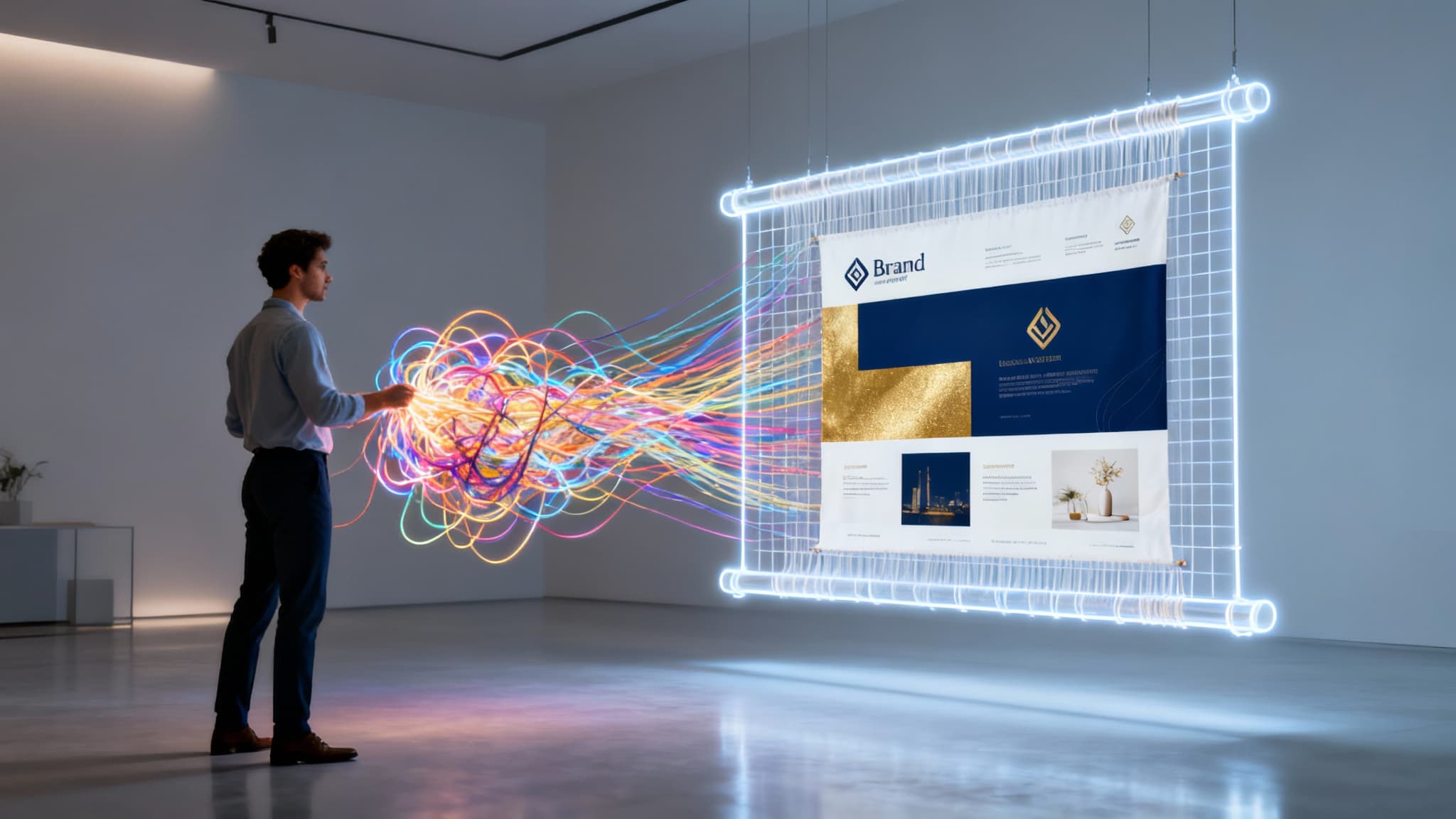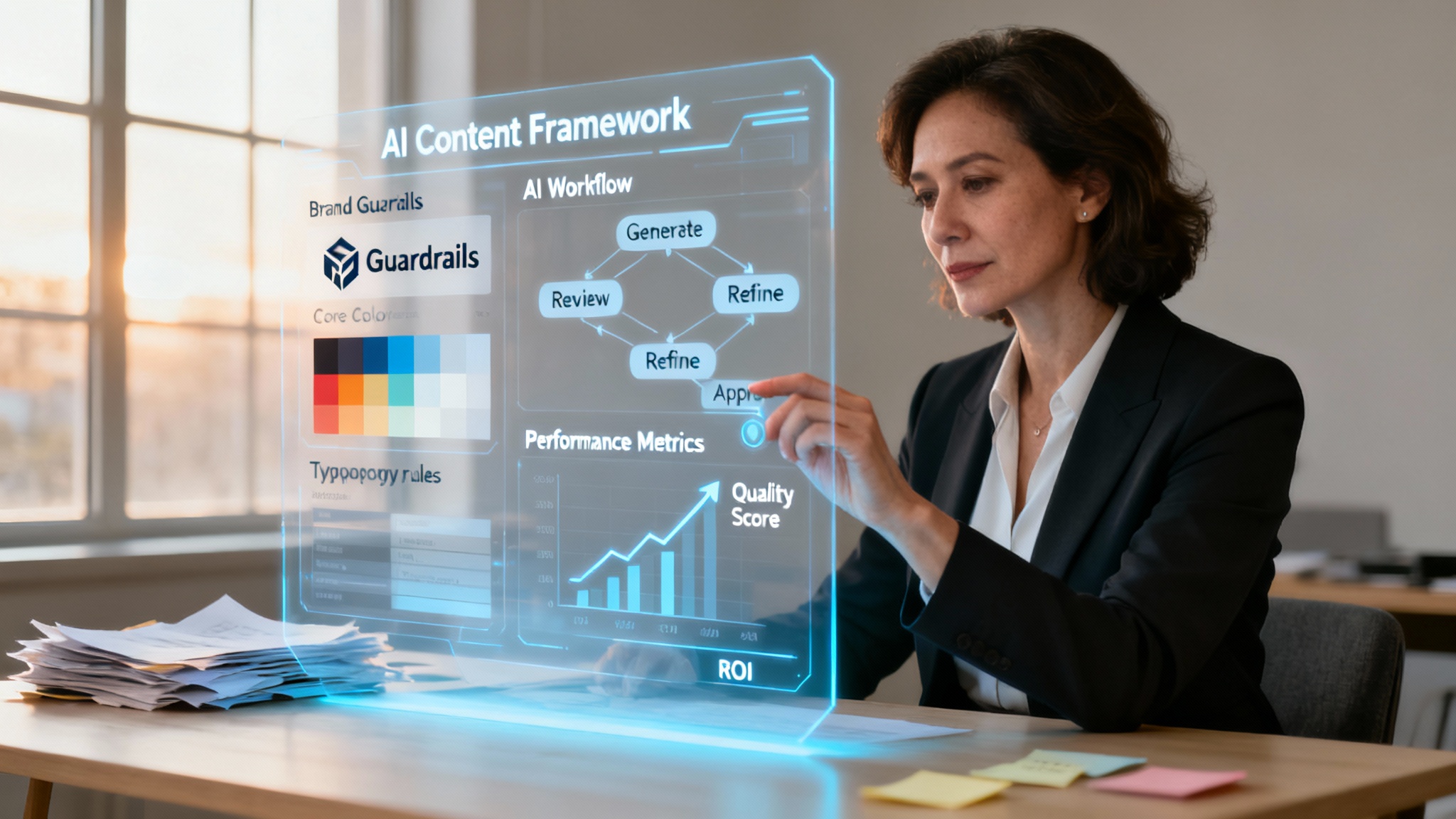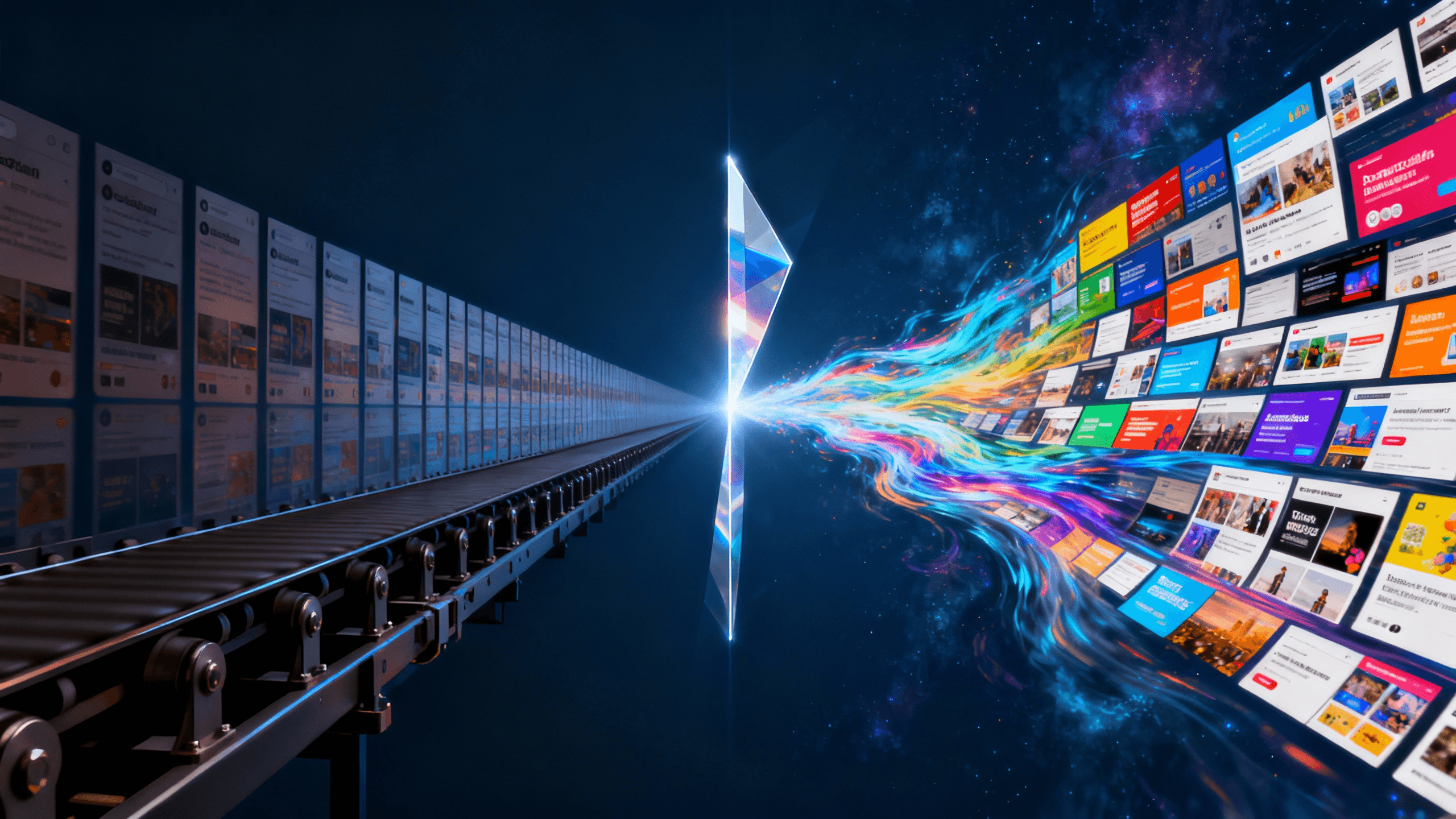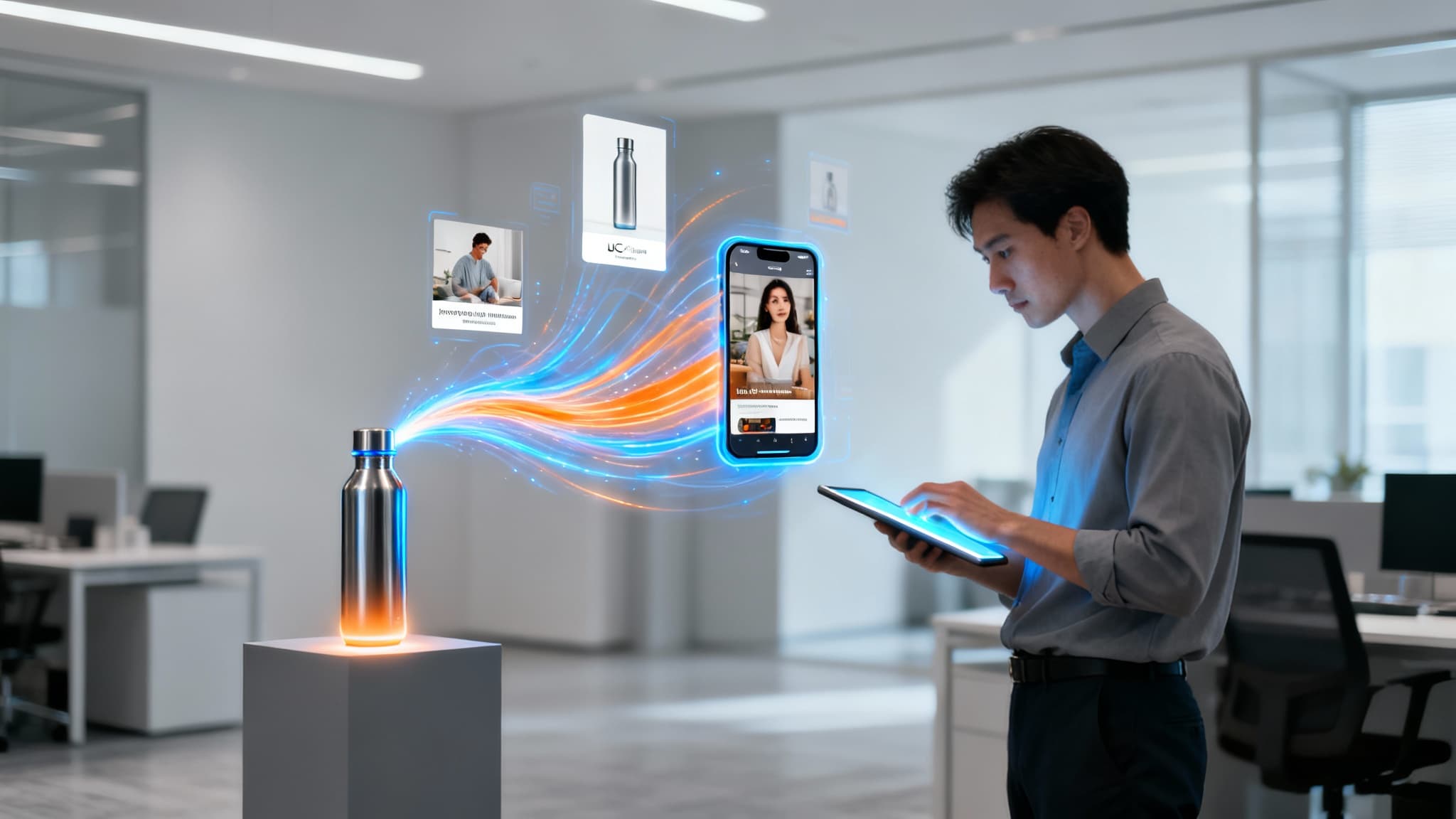Scale Without Sacrifice: The Brand Manager’s Framework for AI Content Quality & ROI
Shehroz

Scale Without Sacrifice: The Brand Manager’s Framework for AI Content Quality & ROI
You know the feeling. The new campaign brief lands, and the asset list is a mile long. You need dozens of social ad variations, fresh lifestyle shots for the website, and authentic-looking UGC videos. Yesterday.
Your budget, however, hasn’t changed. Your timeline is tighter than ever. The pressure to feed the relentless content beast is immense, forcing you to wonder: can we scale our creative output without our brand’s soul paying the price?
For too long, the answer has involved painful compromises. But a new approach is emerging, one that empowers you to scale creative production while enhancing, not diluting, your brand. This is your framework for mastering AI content quality and proving its value from day one.

The Modern Brand Manager’s Dilemma: Drowning in Content Demands
The role of a Brand Manager has fundamentally changed. You’re no longer just a brand guardian; you’re a content engine operator. Every channel—TikTok, Instagram Reels, programmatic ads, email—has an insatiable appetite for fresh, relevant, and high-performing creative.
The traditional model of photoshoots and video production can’t keep up. The cycle is slow, expensive, and rigid.
- Weeks of Planning: Location scouting, model casting, and scheduling logistics eat up valuable time.
- Sky-High Production Costs: Agency fees, photographer rates, and studio rentals drain your budget before a single ad is run.
- Inflexible Outcomes: You get the shots you planned for, but what if you need a different background or a new product variation two weeks later? It’s back to square one.
This friction leads to a dangerous place: the “good enough” content trap. You find yourself recycling old assets, relying on generic stock photos, or pushing out creative that you know isn’t your best, simply to meet a deadline.
The Hidden Costs of “Good Enough” Creative Production
Settling for mediocre creative isn’t just a matter of professional pride; it’s a direct hit to your bottom line. “Good enough” has steep, often invisible, costs that chip away at the brand equity you’ve worked so hard to build.
Think about the real impact:
- Brand Dilution: Using generic stock imagery or off-brand UGC makes you look like everyone else. Your unique visual identity gets lost in a sea of sameness.
- Audience Fatigue: Consumers are savvy. They can spot a low-effort ad from a mile away. When they see uninspired creative, they scroll right past, tanking your engagement rates.
- Wasted Ad Spend: The most brilliant media buying strategy can’t save a campaign built on weak creative. Low click-through rates and high CPAs are often a direct result of content that fails to connect.
- Missed Opportunities: You lack the assets to A/B test effectively, personalize campaigns for different segments, or react quickly to a trending topic.
The constant compromise erodes your brand’s premium feel and, ultimately, its performance. The sacrifice for speed becomes a sacrifice of impact.
Before AI: Establishing Your Brand Integrity Guardrails
Here’s a critical truth: generative AI is a powerful amplifier. It will amplify a strong brand strategy just as effectively as it will amplify a weak or inconsistent one. Before you even think about tools, you must solidify your foundation.
Your first step is to create “Brand Integrity Guardrails.” This isn’t just your logo and color palette. It’s a comprehensive document that codifies your brand’s visual DNA. It should be the source of truth for any creator, human or AI.
Your guardrails should include:
- Core Mood & Vibe: Are you bright and energetic? Moody and sophisticated? Minimalist and clean?
- Lighting Styles: Define your go-to lighting. Is it soft, natural morning light or dramatic, high-contrast studio light?
- Color Science: Go beyond your primary hex codes. Define the tones, saturation, and temperature of your brand’s world.
- Model & Talent Archetypes: Describe the people who represent your customers. What is their style? What emotions do they convey?
- Prop & Environment Rules: What objects, textures, and settings belong in your brand’s universe? And what absolutely does not?
With these guardrails in place, you’re not just hoping for on-brand content. You’re engineering it.
Introducing the AI Content Strategy Framework: Your Scalable Solution
With your brand guardrails established, you can now leverage AI not as a replacement for creativity, but as a scalable engine for it. This framework shifts your role from a logistics coordinator to a creative director, enabling you to focus on strategy while technology handles the execution.
The goal is to build a system that consistently produces high-quality, on-brand creative assets at a fraction of the time and cost. It’s about ensuring exceptional AI content quality by design, not by chance. This framework is built on three core pillars: Defining Standards, Implementing Workflows, and Measuring ROI.
Step 1: Define Your AI Quality Standards for True Authenticity
Quality in AI-generated content is not just about photorealism. It’s about brand-realism. Your standards must be specific and tied directly to your guardrails. Forget generic prompts; think like a creative director giving a detailed brief.
Your AI quality checklist should cover:
- Brand Consistency: Does the image adhere to your defined lighting, color science, and mood?
- Product Accuracy: Is your product rendered flawlessly, with correct labeling, texture, and scale?
- Human Authenticity: Do the models look natural and relatable? Do their expressions align with the campaign’s emotional goal?
- Compositional Strength: Does the image follow basic principles of visual hierarchy and composition, drawing the eye where you want it to go?
- Contextual Relevance: Does the scene and setting make sense for your product and target audience?
Step 2: Implement an On-Brand AI Generation and Review Workflow
A successful AI content strategy relies on a repeatable process. Random experimentation is fun, but a structured workflow is what delivers scalable results.
Your workflow should look something like this:
- Briefing from Guardrails: Every content request starts with your Brand Integrity Guardrails. The campaign goal is translated into specific visual directives (e.g., “UGC-style video, morning light, model archetype ‘The Urban Explorer'”).
- Input & Generation: Use a generative AI platform where you can upload your actual product shots and brand assets. This is key. The AI learns from *your* brand, not the entire internet, ensuring consistency.
- The Human-Led Review: This is where your brand intuition shines. Review the generated assets against your Quality Standards checklist. Is the vibe right? Is the product perfect?
- Iteration & Refinement: The magic of AI is the ability to iterate almost instantly. Don’t like the background? Change it in seconds. Need a different model? Generate a new option. This rapid feedback loop is impossible with traditional shoots.
Step 3: Measure What Matters: A Simple Framework for AI Content ROI
To get buy-in and prove the value of your strategy, you need to measure more than just cost savings. The true ROI of a scalable content engine is measured in speed, agility, and performance.
Track these key metrics to build your business case:
- Creative Velocity: How many unique, campaign-ready assets can you produce per week? Compare this to your previous benchmark.
- Time-to-Market: How long does it take to go from a new idea to a live campaign? AI can shrink this from weeks to days, or even hours.
- Testing Capacity: Measure the number of A/B tests you can run on your ad creative. More tests lead to faster learning and better-optimized campaigns.
- Performance Uplift: Track core advertising metrics like Click-Through Rate (CTR), Cost Per Acquisition (CPA), and Return On Ad Spend (ROAS) for campaigns using AI-generated assets versus your old ones.
How to Choose an AI Platform That Protects Your Brand
Not all AI tools are created equal. As a brand manager, your primary concern is control and quality. When evaluating an AI content generation platform, look for one that functions as a true brand partner.
Ask these questions:
- Does it offer Brand Asset Control? Can you upload your specific products, logos, and style guides to train the AI on *your* brand? This is non-negotiable for maintaining integrity.
- Is the Output High-Fidelity? Does the platform generate commercially-ready, high-resolution images and videos, or just concept-level mockups?
- Can it Create Diverse Asset Types? Look for a platform that can generate both polished product photography and authentic, UGC-style video to cover all your marketing needs.
- Are the Usage Rights Clear? Ensure you have full commercial rights to use the assets you create across all your marketing channels without restriction.
The right platform isn’t just a generator; it’s a virtual studio that understands your brand and is built for the speed and scale of modern marketing.
By implementing this framework, you can finally escape the cycle of creative compromise. You can meet the demands for more content while simultaneously elevating its quality and impact. It’s time to scale without sacrifice.
If you’re ready to see how a dedicated AI content creation platform can help you implement this framework, explore how solutions like Slaptastic are empowering brand managers to generate stunning, on-brand photoshoots and videos in minutes, not months.



